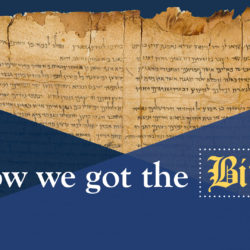353 Bible 24 – Recommended Bible Translations (Which Bible Is Best?)
This is now our last episode in this 24 part class on How We Got the Bible. Today after a quick review and an appeal to learn the biblical languages, I’ll recommend a number of Bible translations. Although I’m hesitant to do this, so many have written in asking for it that I would be Read more about 353 Bible 24 – Recommended Bible Translations (Which Bible Is Best?)[…]

